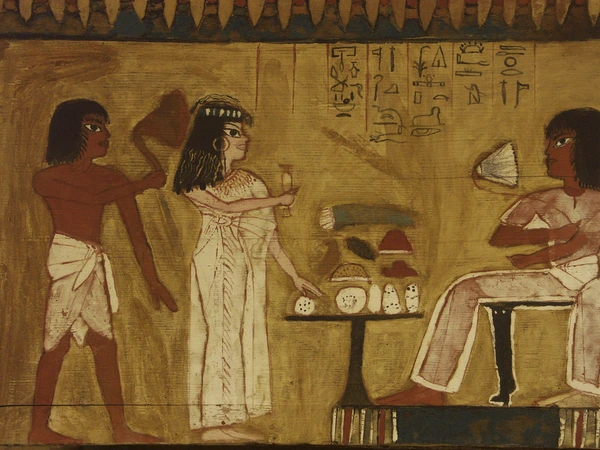Beer by the Nile: A Story That Still Bubbles
Imagine standing on the banks of the Nile River, over 4,000 years ago. The sun blazes down as farmers return from the fields. Nearby, women knead dough, not for bread, but for something far more exciting: beer. Thick loaves are baked, crumbled, soaked in jars, and left to bubble in the Egyptian heat. Within days, the mixture transforms into a rich, slightly sweet drink that becomes the lifeblood of the civilization.
That’s the story of ancient Egyptian beer making, one of humanity’s earliest brewing traditions. Long before modern breweries and craft IPAs, beer was already central to Egyptian culture. It wasn’t just a drink it was currency, nutrition, medicine, and even a sacred offering to the gods.
Why Ancient Egyptian Beer Making Mattered
Beer in ancient Egypt was more than a refreshment. It played multiple roles in society:
-
Everyday nourishment – Beer was packed with calories, proteins, and vitamins from grains, making it a safe staple compared to untreated water.
-
Currency and wages – Workers on the pyramids were often paid in bread and beer, showing their economic importance.
-
Religious significance – Egyptians believed beer was a gift from Osiris, the god of agriculture. Beer offerings were made in temples and tombs.
-
Cultural identity – Just as wine was to ancient Greece, beer was to Egypt a national symbol.
When you step back, you realize that brewing beer wasn’t just about drinking. It was about survival, ritual, and community.
The Step-by-Step Guide to Ancient Egyptian Beer Making
Unlike today’s breweries with steel tanks and temperature control, Egyptians brewed with simple tools and clever techniques. Here’s how the process likely looked:
1. Malting the Grain
Barley and emmer wheat were soaked in water until they sprouted slightly, then dried in the sun. This activated natural enzymes that would help break down starch into sugar—fuel for fermentation.
2. Baking Beer Bread
Instead of using loose grain, Egyptians often baked “beer bread,” a thick, half-baked loaf made without much yeast. These loaves were crumbled into jars for brewing.
3. Soaking and Mashing
The bread was soaked in water inside clay jars. Sometimes dates or honey were added for sweetness. As the mixture sat, natural yeast from the air and grain skins began to ferment.
4. Fermentation in Clay Pots
The jars were left uncovered in warm areas. Fermentation was quick in Egypt’s hot climate, usually taking just a few days. The result was a frothy, nutritious, slightly sour drink.
5. Straining and Serving
Before drinking, the beer was strained through reeds or cloth to remove clumps of bread and husks. It was drunk fresh, thick, and cloudy—very different from today’s clear, bubbly lagers.
Table: Ancient Egyptian Beer vs. Modern Beer
| Feature | Ancient Egyptian Beer | Modern Beer |
|---|---|---|
| Main Ingredients | Barley, emmer wheat, dates, and honey | Barley, hops, yeast |
| Brewing Method | Bread-based fermentation in clay pots | Malted grains, stainless steel tanks |
| Flavor | Thick, sweet, sour, low alcohol | Clear, bitter, or hoppy |
| Alcohol Content | 2–4% (mild) | 4–8% (average) |
| Role in Society | Nutrition, currency, religion | Social, recreational |
Stories from the Past
Historical records and tomb paintings provide fascinating insights into beer’s role:
-
Tomb Scenes: Egyptian murals show women brewing beer, from kneading bread to pouring jars, proving how central women were to the craft.
-
Medicinal Uses: Ancient medical texts like the Ebers Papyrus mention beer as a base for medicines.
-
Royal Offerings: Pharaohs often included beer jars in tombs, ensuring nourishment in the afterlife.
Surprisingly, archaeological finds show traces of beer in jars dating back over 5,000 years. In 2019, researchers even discovered what may be the world’s oldest industrial-scale brewery in Abydos, Egypt, capable of producing thousands of liters at a time (reported by History.com).
The Tools of Egyptian Brewing
Egyptians didn’t have metal vats or thermometers, but they had everything they needed:
-
Clay jars for fermenting and storing.
-
Wooden ladles and reeds for stirring and straining.
-
Stone mills for grinding barley and wheat.
-
Sun and fire for malting and baking bread.
Each tool connected brewing to daily life, blending cooking, farming, and craftsmanship into one practice.
Expert Insights
According to the Smithsonian, Egyptian beer was so central to the diet that “it may have provided up to one-third of daily calorie intake.” National Geographic notes that workers on the Giza pyramids were supplied with about 4 liters of beer per day as rations.
Researchers from Cambridge University have even tried to recreate Egyptian beer using authentic grains and traditional clay pots. Their findings suggest the brew tasted like a slightly sour, porridge-like ale, a far cry from crisp modern beers but perfectly suited for nutrition.
Why This Still Inspires Us Today
When you think about it, ancient Egyptian beer making is part of a bigger human story: learning to transform raw grains into something greater.
-
It shows how necessity sparks innovation.
-
It connects food, culture, and belief into one practice.
-
It reminds us that fermentation, the art of controlled decay, built civilizations.
And perhaps that’s why craft breweries today sometimes look backward, experimenting with “ancient ales” inspired by Egyptian recipes. There’s something irresistible about sipping a flavor that connects us to the pharaohs.
What This Really Means
When you step back, Egyptian beer wasn’t just alcohol; it was life itself. It paid workers, nourished families, honored gods, and shaped culture. The story of ancient brewing is a story of survival, creativity, and celebration.
So the next time you raise a glass of beer, remember: you’re echoing a toast that’s been shared for over 5,000 years, one that started with clay pots and humble bread by the Nile.
FAQs on Ancient Egyptian Beer Making
Q1: What did ancient Egyptian beer taste like?
It was thick, sweet, and slightly sour, more like liquid bread than modern beer.
Q2: Did everyone drink beer in Egypt?
Yes—men, women, and children all consumed beer daily, since it was safer than water.
Q3: Was it alcoholic?
Yes, but only mildly, around 2–4%. Its role was more about nutrition than intoxication.



